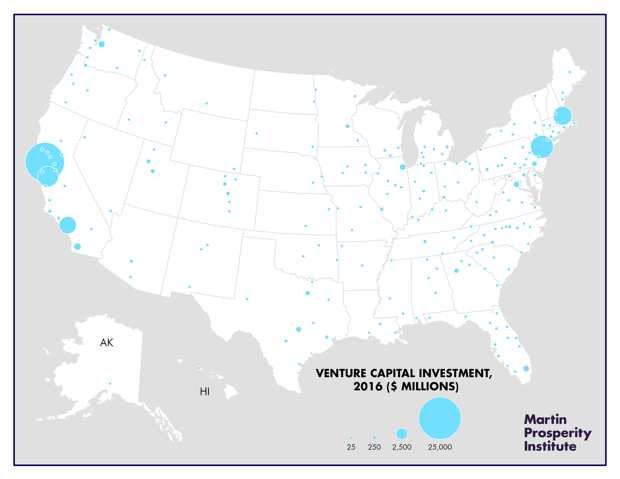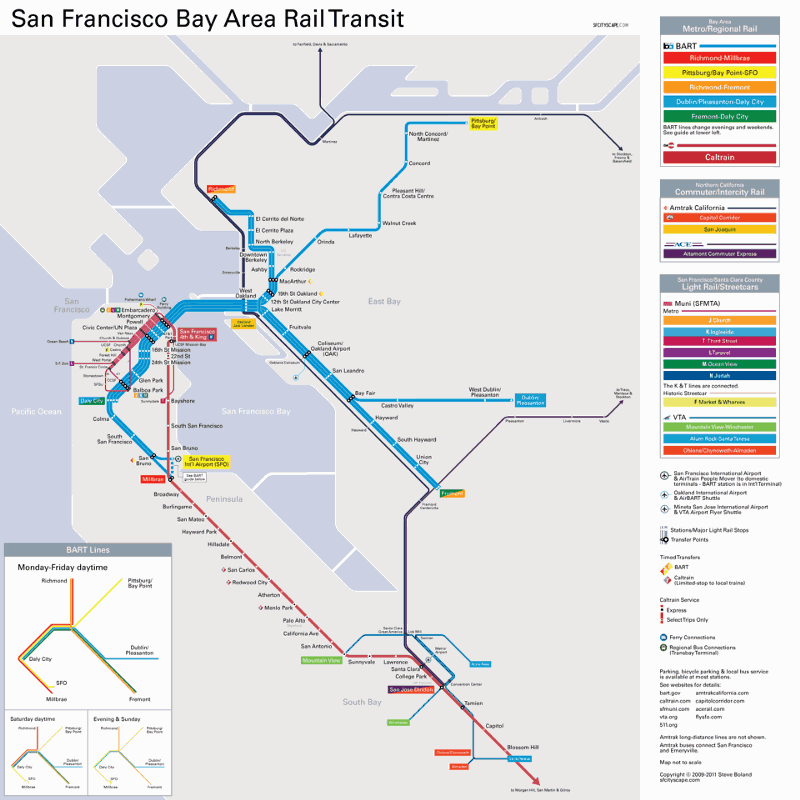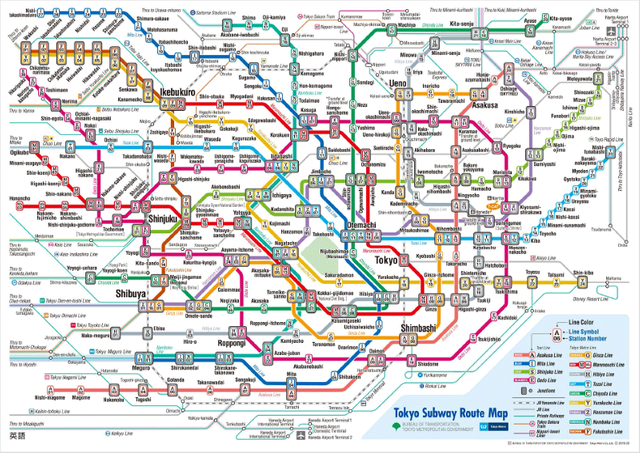In Defense Of The Bay Area in Terms of Starting A Startup
This article was originally published in this Medium article by me. You can follow me there for more frequent blog posts.
I keep reading articles, blogs, and other pieces saying that the Bay Area will stop growing as a startup center. They then mention other US cities, usually mid-size to large ones like Denver, Austin, L.A., Seattle, etc., will grow to become the next Bay Area. But I have doubts about that.
I grew up in Denver, one of the cities usually mentioned to be the next Silicon Valley. But in my experience, I have made more of a network in the six months that I have been in the Bay Area than the sixteen years that I spent in Denver*. The area basically only has TechStars early-stage funding in Boulder. The Bay Area, meanwhile, has billions in capital. Perhaps that could change if a new tech hub ever emerges, but the network seems too entrenched.

The picture was taken from this CityLab article that describes the VC situation well. As you can see, the Bay Area has a clear advantage for VC funding. Only New York, L.A., and Boston can compete. And they have high costs of living.
An area’s cost of living can be managed as well. Exurbs outside the Bay Area such as Pittsburg, Antioch, Concord, Dublin, Gilroy, and many others all have public transport access to Palo Alto, San Francisco, and San Jose. They rent for around $2 a square foot a month. Sure, it takes about an hour to travel there one-way. But many people do that to get to work every day, and as a startup founder, you probably have the luxury of working from home. One can even extend the logic and live in Tracy, Modesto, and Stockton. San Jose grew that way: companies would build their factories on cheap marshland before the area became expensive.
The high cost of housing also exists primarily because of NIMBYs. But the NIMBYism seems relatively contained to certain towns and counties. Dublin, Fremont, and other cities seem to be eager to develop apartment complexes and other new developments. Plus, a town or county has only so much power. The current state government under Gavin Newsom has been forcing towns to build more affordable housing, and I see other movements aiming to force the towns to relax their zoning regulations.
A simple change such as an improved transport system can also significantly improve the cost of living. The Bay Area is (according to the US Census) about the same size as the Tokyo Metro Area. The region serves as a great example of what the Bay Area could be, not only because it acts as an example of an affordable high-density region in an earthquake zone but also because it has an impressive rail network. A lot of Japan’s rail is private as well, which shows that a private rail line (or hyperloop, hopefully) between northern California cities is possible. And the GDP, access to capital, and entrepreneurship of the region make me believe that it is somewhat likely.

A subway-style map of the Bay Area’s transit networks by Davide Pio. This is from 2012, so the Warm Springs stop and Antioch extension for the BART are not on the map. Each county runs its own line, and with varying amounts of comfort, punctuality, wait times, delays, and speed for each. All of these besides the Amtrak and ACE accept Clipper cards, and a round trip can cost as much as $20. There exists a lot of talk about improving this, but NIMBYs and general government incompetence slow the process.

The Tokyo Subway Map (Here’s a link to the PDF and explanation). This does not include the high-speed rail lines. However, it’s not hard to hear praise about Japan’s transit infrastructure. It’s a lofty goal to get to Tokyo subway quality from the BART, but it’s definitely possible.
Granted, if you don’t need to be physically near venture capital or software developers, then it probably makes more sense to move outside the US to a place with an extraordinarily low cost of living such as Thailand. And labor costs more in the Bay Area, software developers especially. So, of course, it all depends on what one plans to do.
But regardless, I still feel that the Bay Area has a ton of opportunity available. It’s just going through a rough patch right now.
*I did not spend sixteen years networking in Denver, though. I was a child, after all.
On a side note, I look forward to experiments such as The Seasteading Institute and the ZEDE in Honduras. Those probably have the highest chance of overtaking Silicon Valley.
Congratulations @paul-doherty! You received a personal award!
You can view your badges on your Steem Board and compare to others on the Steem Ranking
Do not miss the last post from @steemitboard:
Vote for @Steemitboard as a witness to get one more award and increased upvotes!